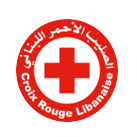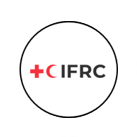2020, a year that was met with great challenges introduced by the COVID-19 pandemic that led to priority shifting of many National Societies (NS). The Red Cross and Red Crescent Societies are still providing on the ground support to their communities while taking into account certain regulations set at a national level. Unfortunately, the rise of COVID-19 cases and the strict social distancing rules deemed it challenging for some National Societies to acquire and give proper trainings to their staff and volunteers. The challenge, however, was met with the desire of many National Societies to build their digital capacity even if it would be done remotely. “There is often a lot of drive within the National Society to start working on new things” said Heleen Elenbaas, 510’s Geographic Information System and Data Management Project Office. This is why 510, the data and digital initiative of the Netherlands Red Cross, supported numerous National Societies in developing digital products that would assist in their COVID-19 preparedness and response strategies.
Digital Communication
With the COVID-19 restrictions, a creative and more digital approach of communication had to be initiated and taken into effect. The design and development of digital tools was accompanied by the preparation of digital trainings that act as a guide on how to use and manage these products. Providing the appropriate training was essential to ensure that all digital products are used efficiently and in a sustainable way. Various online sessions were set up by 510 technical coordinators to help increase the National Societies’ capacity on the use of these digital products. Based on the acute need of the National Societies and the types of tools being developed, a variety of trainings were set up and given. These included knowledge transfer trainings, Geographic Information System (GIS) trainings, data management trainings, as well as trainings on Python, SEIR model, PowerBI, Google data studio and more. Thus far, an estimated 20 trainings were given, that were divided into multiple sessions, given in either English or French, and were designed in a way that fits the context, work and need of the National Society.
Digital Trainings
Elenbaas, was asked about the training support that she provided to the Iraq Red Crescent Society (IRCS) and said, “they wanted to start working with GIS right away but were in need of more support, and now we are doing weekly GIS working sessions together”. Moreover, when talking with the Sadeq Nazar, the Head of the Organizational Development and Reporting Department at IRCS, about the training sessions, he stated “we were able to shift our strategy, with the support of 510, and learned more about GIS and how IRCS can use and integrate this tool into our ongoing work”. Ibrahim Ali Ahmad, the GIS and Business Intellignece Specialist at the Lebanese Res Cross, shared his experience attending several 510 trainings by saying, “the trainings were most benefeicial since we were able to apply what we’ve learned in our workflow and it helped improving previous projects and ongoing ones”. Digital trainings not only assist the National Societies in building their staff’s capacity, but they also introduce them to more digital workspaces and tools that sometimes act as a platform for sharing their experiences. Similarly, the Jordan National Red Crescent Society (JRCS) attended one of 510’s vulnerability and risk index trainings, that covered topics such as data management. Liselot Kattemölle, 510’s Project Assistant and the country focal point for JRCS said “the National Society was really pleased with the training they received and have since translated the material to Arabic and are using it to set up their own internal training of trainers at the NS level”. It is also equally as important to conduct follow-ups with the National Societies to gather their feedback on the trainings, since that firstly adds value to all future preparations and secondly helps asses if certain needs have changed. Elenbaas was asked to share some feedback she had received from IRCS and said “last week they finalized their first map and they were very content and proud!” The latter was also expressed by Nazar from IRCS as he said “it was hard at the beginning when learning how GIS works, but now I have completed a map, on my own, with accurate data and it is really exciting”. Additionally, Ali Ahmad shared some feedback by saying, “I was particularly impressed with the practical use of the material presented; this is exactly what I would expect from a training”. He then expressed how the trainings affected the outcome of the Lebanese Red Cross’ work by saying, “it improved the outcome of our projects and made our teamwork effective in terms of planning, decision making, and employee engagement, which led to a higher quality of work”.

Post-training Geographic Information System map completed by Sadeq Nazar (IRCS)
Working towards this data and digital shift, is unfortunately sometimes met with limitations, “often the follow up and implementation is limited because there isn’t enough capacity or resources, such as acquiring certain licenses” said Elenbaas when talking about some challenges she faced. However, she continued to say that “the drive within the National Society to start working on new things is there” which for many is already a tremendous first step towards including more data and digital into their strategies and work, especially in a year that was met with immense challenges.
Image source: IFRC ShaRED Web Platform


